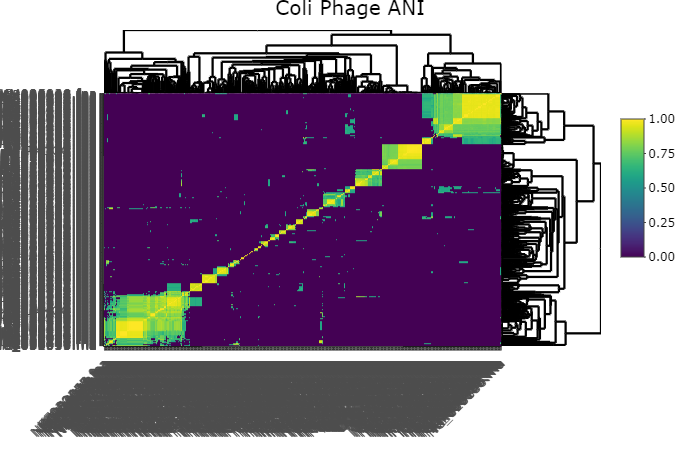Based on the command we use for searching for phages in Genbank for INPHARED database , I recently came across some useful further eutilities commands. Writing here for when I forget
To list the most recent genomes in the last 50 days for instance use the -days flag
esearch -db nucleotide -query "gbdiv_PHG"[prop] -days 50 | efilter -query "40000:800000 [SLEN]" -sort "Date" | esummary | xtract -pattern DocumentSummary -element AccessionVersion -element CreateDate -element UpdateDate -element Title
-element TaxIdthen with esummary and the extract , utilities to extract specific information. In this case the Accession, creation date, update date , title and TaxID . To produce an easily parsable list in tab format.
OR420333.1 2023/10/01 2023/10/01 UNVERIFIED: Macromonas phage BK-30P, complete genome OR473000.1 2023/10/01 2023/10/01 Synechococcus phage S-CREM2, complete genome OR500351.1 2023/10/01 2023/10/01 Xanthomonas phage Murka, complete genome OR257569.1 2023/10/01 2023/10/01 Ruegeria phage RpAliso, complete genome OR338916.1 2023/10/01 2023/10/01 Bacillus phage DZ1, complete genome OR339795.1 2023/10/01 2023/10/01 Escherichia phage phi456, complete genome OR296290.1 2023/10/01 2023/10/01 Escherichia phage SDYTW1-F1-2-2_3, complete genome OR157981.1 2023/10/01 2023/10/01 Staphylococcus phage BUCT_X001, complete genome OQ326580.1 2023/10/01 2023/10/01 UNVERIFIED_ORG: Phage vB_PaeM_Sem1, complete genome OR148986.1 2023/10/01 2023/10/01 Caudovirus D_HF5_2C, complete genome


